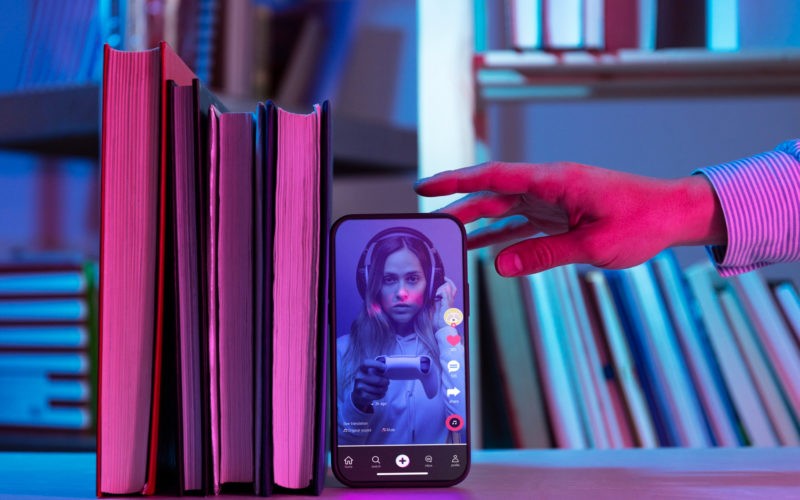AI video editing has entered a transformative phase in 2026, powered by smarter algorithms, multimodal creativity, and an evolving understanding of emotion and narrative. From scene detection and adaptive sound to real-time contextual optimization, the latest tools are changing how videos are created — and who can create them.
This article explores how artificial intelligence is reshaping the art of video editing through three standout platforms — Short AI, Zebracat AI, and Nanobanna Video — while also examining the broader trends and innovations defining the future of visual storytelling.
The Expanding Market for AI Video Editing
The AI video editing industry continues to experience explosive growth. Valued at USD 1.6 billion in 2025, the market is projected to reach USD 9.3 billion by 2030, expanding at a 42.2% CAGR. By the end of this year, over half of all video content is expected to involve some level of AI-assisted editing.
Behind these numbers lies a deeper story: a shift toward intelligent tools that merge technical precision with creative intent. Models such as Nano Banana, an experimental framework derived from Gemini’s architecture, have inspired a new generation of platforms capable of interpreting tone, rhythm, and emotion — the true essence of creative storytelling.
Short AI: Minimalist Storytelling with Smart Automation

A Clear Purpose With Maximum Impact
Short AI represents a philosophy of simplicity. Rather than overwhelming users with endless settings, it focuses on clarity and intelligent automation. The platform identifies scenes, emotions, and pacing patterns, suggesting edits that align with natural storytelling flow.
Core Highlights
- Emotion and scene detection: Accurately identifies visual and emotional beats.
- Automatic captioning: Achieves around 96% accuracy on clean audio.
- Sound and pacing alignment: Creates natural rhythm without manual adjustment.
This level of automation feels intuitive — enhancing creativity rather than dictating it. For content creators, educators, and marketers, Short AI offers an efficient, professional-grade experience that keeps storytelling at the forefront.
Ideal Use Case
Short AI suits those seeking speed and narrative clarity — creators who value focus over complexity. While its minimalist interface may seem limited to power users, its precision and speed make it a favorite for streamlined editing.
Core Highlights That Matter
Short AI excels in automation that feels human. The AI identifies emotional beats and visually appealing frames with uncanny precision. Its ability to understand narrative rhythm is something I haven’t found in many editors. The system also offers automatic captioning (96 % accurate on clean audio), sound alignment, and pacing tools that are so intuitive, I almost forgot I was working with software.
Who It’s Best For
Short AI is ideal for content creators, educators, and marketers who prioritize clarity and time efficiency. It’s a smart match for anyone looking to maintain a professional standard without needing a post-production team. The only slight drawback? Its minimalist interface might feel limiting for users who crave total creative control, but for most, that’s part of its charm.
Zebracat AI: Bold, Visual Experimentation for Creators

A Playground for Visual Energy
Zebracat AI sits at the opposite end of the spectrum. It thrives on energy, color, and experimentation — a dynamic environment for those who see editing as a creative playground. The interface bursts with animation tools, motion templates, and vivid overlays, transforming footage into expressive visual statements.
What Makes It Stand Out
Its defining feature is AI-assisted motion templates that adapt transitions and effects to scene energy. Soft fades complement emotional moments, while fast cuts amplify high-action clips. This adaptive rhythm gives social videos and reels an instant edge.
Ideal Use Case
Zebracat AI is best suited for influencers, lifestyle creators, and marketers who favor expressive storytelling. Its range of customization options can feel overwhelming at first, but for those who thrive in visual freedom, it delivers creative satisfaction unmatched by minimalist editors.
Nanobanna Video: Precision Meets Professional Control

A Surprising Balance of Structure and Flexibility
Despite its playful name, Nanobanna Video offers one of the most comprehensive AI editing environments available today. It blends technical depth with an accessible workflow — ideal for semi-professionals and production teams seeking both structure and creative fluidity.
The AI analyzes tone, lighting, and motion to generate intelligent editing suggestions aligned with a video’s emotional direction. It even provides real-time feedback during trimming or color-grading, making adjustments feel collaborative rather than mechanical.
Key Strengths
- Adaptive sound optimization: Automatically balances dialogue and background noise.
- Collaborative cloud environment: Syncs projects across users for remote teamwork.
- Scalable editing: Suitable for both short-form clips and full-length productions.
While rendering times can be longer and the learning curve steeper than other tools, Nanobanna Video rewards users with precise control and scalable creative capability.
Key AI Video Editing Trends for 2026
- Emotion-Aware Editing: AI now detects tone and sentiment to align pacing, lighting, and transitions with emotional flow.
- Multimodal Creativity: Integration of text, sound, and video enables fully generative storytelling pipelines.
- Personalized Editing Assistants: Tools are learning individual creative styles, offering adaptive recommendations.
- Generative Visuals & VFX: Platforms like Runway and Pika Labs create dynamic video sequences directly from prompts or storyboards.
- Real-Time Platform Optimization: AI automatically formats videos for YouTube, TikTok, or LinkedIn, adjusting captions and dimensions to fit each medium.
- Sustainable Cloud Workflows: Energy-efficient rendering systems and GPU optimization are driving greener production pipelines.
These developments underscore how AI video editing has evolved beyond automation — toward a system that understands context, creativity, and audience behavior.
Other Emerging AI Video Editing Tools to Watch
In addition to Short AI, Zebracat AI, and Nanobanna Video, several other platforms are shaping the creative landscape:
- Runway ML: Offers real-time generative motion and object manipulation.
- Pika Labs: Converts text or images into cinematic video sequences.
- Kaiber: Specializes in transforming static visuals into animated stories.
- Lumen5: Ideal for social media storytelling with automated branding alignment.
These tools reflect the diversification of AI-driven editing — from cinematic effects to data-driven content optimization.
Beyond Automation: How AI Is Transforming the Creative Process
From Editing to Creative Direction
AI is no longer just an assistant; it’s evolving into a co-director capable of analyzing audience engagement and predicting effective pacing or tone. This empowers creators to make informed editorial choices before publishing.
Human-AI Collaboration
Rather than replacing editors, AI now complements them. Modern systems retain a user’s stylistic preferences — transitions, tone, and palette — learning over time to mirror their aesthetic identity.
Real-Time Contextual Editing
The same video can now be tailored automatically for multiple platforms, optimizing framing, duration, and even emotional tone based on viewer behavior.
Authenticity and Ethics
While automation brings efficiency, it also raises questions about creative authenticity. The key lies in balance — using AI to enhance, not erase, human expression.
Sustainability in Production
Cloud rendering and intelligent GPU usage are reducing hardware demands and energy consumption, setting new standards for eco-efficient video editing.
Integration with Next-Gen Storytelling
The next frontier involves AI editing for AR, VR, and spatial media, where tools will dynamically adjust lighting, motion, and depth inside immersive environments. Storytelling is poised to move from screens into interactive worlds.
Why AI Video Editing Matters in 2026
In a digital environment where audience attention spans are shrinking, efficient and emotionally resonant content creation has never been more crucial. AI-powered video editing democratizes access to professional storytelling — enabling creators, educators, brands, and startups to produce cinematic-quality content without large budgets or advanced technical skills.
These tools not only accelerate workflows but also expand creative imagination, turning complex post-production tasks into moments of experimentation and innovation.
Looking Ahead to 2027
The coming year will bring deeper integration between AI and spatial computing, allowing editors to manipulate 3D scenes, camera depth, and dynamic lighting in real time. As generative models become more emotionally aware and multimodal, AI will move from assisting creativity to enhancing artistic intuition itself.
The future of editing is not about automation — it’s about amplification: empowering creators to tell richer, more immersive stories.
FAQ: Smart Video Editing and AI Creativity
1. What is AI video editing?
AI video editing uses machine learning to automate tasks such as trimming, color correction, scene detection, and captioning. These systems interpret visual context, emotion, and narrative flow to enhance creative output.
2. How does AI improve the creative process?
By removing repetitive tasks and technical barriers, AI allows editors to focus on storytelling, pacing, and emotion rather than manual adjustments.
3. Will AI replace human editors?
No. AI serves as a collaborative assistant, improving efficiency while human editors provide the artistic vision and emotional judgment.
4. Which AI video tools are best for beginners?
Platforms like Short AI and Zebracat AI offer intuitive interfaces and automation features ideal for new creators and marketers seeking quick, professional results.
5. What about data privacy in cloud-based editors?
Reputable platforms use encryption and strict privacy policies. Always confirm compliance with regulations such as GDPR or CCPA when handling client or proprietary footage.
6. How can AI tools support brand storytelling?
AI ensures consistency by analyzing tone, visuals, and brand identity across multiple campaigns, creating cohesive video communication.
7. What’s next for AI in video production?
Expect adaptive storytelling powered by generative AI — videos that evolve based on viewer behavior, integrating music, scriptwriting, and editing into unified creative systems.
Final Takeaway
AI video editing in 2026 represents a balance between efficiency and emotion, automation and authenticity. Tools like Short AI, Zebracat AI, and Nanobanna Video demonstrate how technology can extend human creativity rather than replace it — transforming video editing into an intelligent, collaborative, and imaginative process.
⸻ Author Bio ⸻
Tina is a passionate AI tool tester and market observer who, with their keen eye for innovation and usability, spends countless hours figuring out how emerging technologies are changing the creative landscape.
⸻
Images courtesy of the author.












